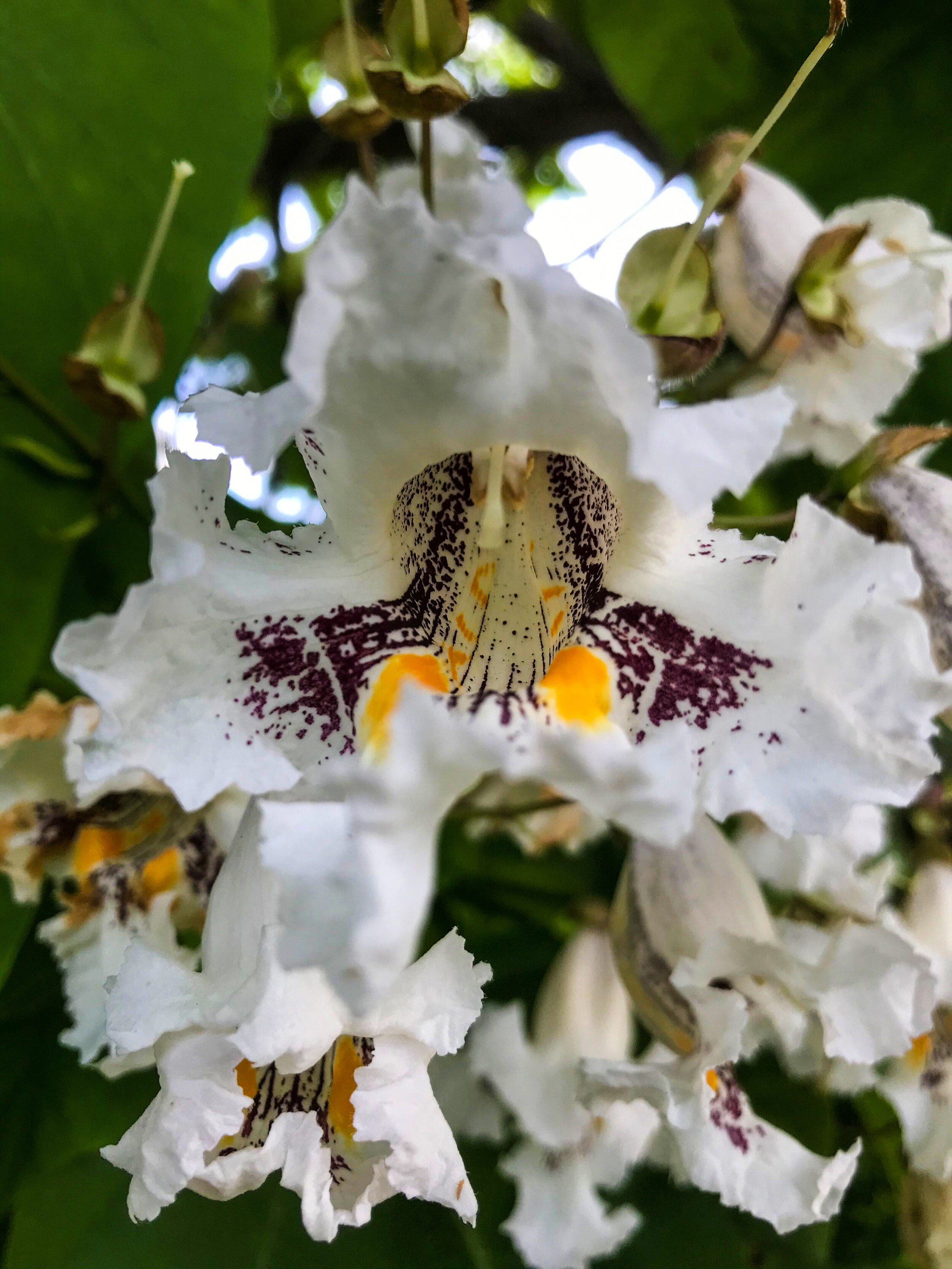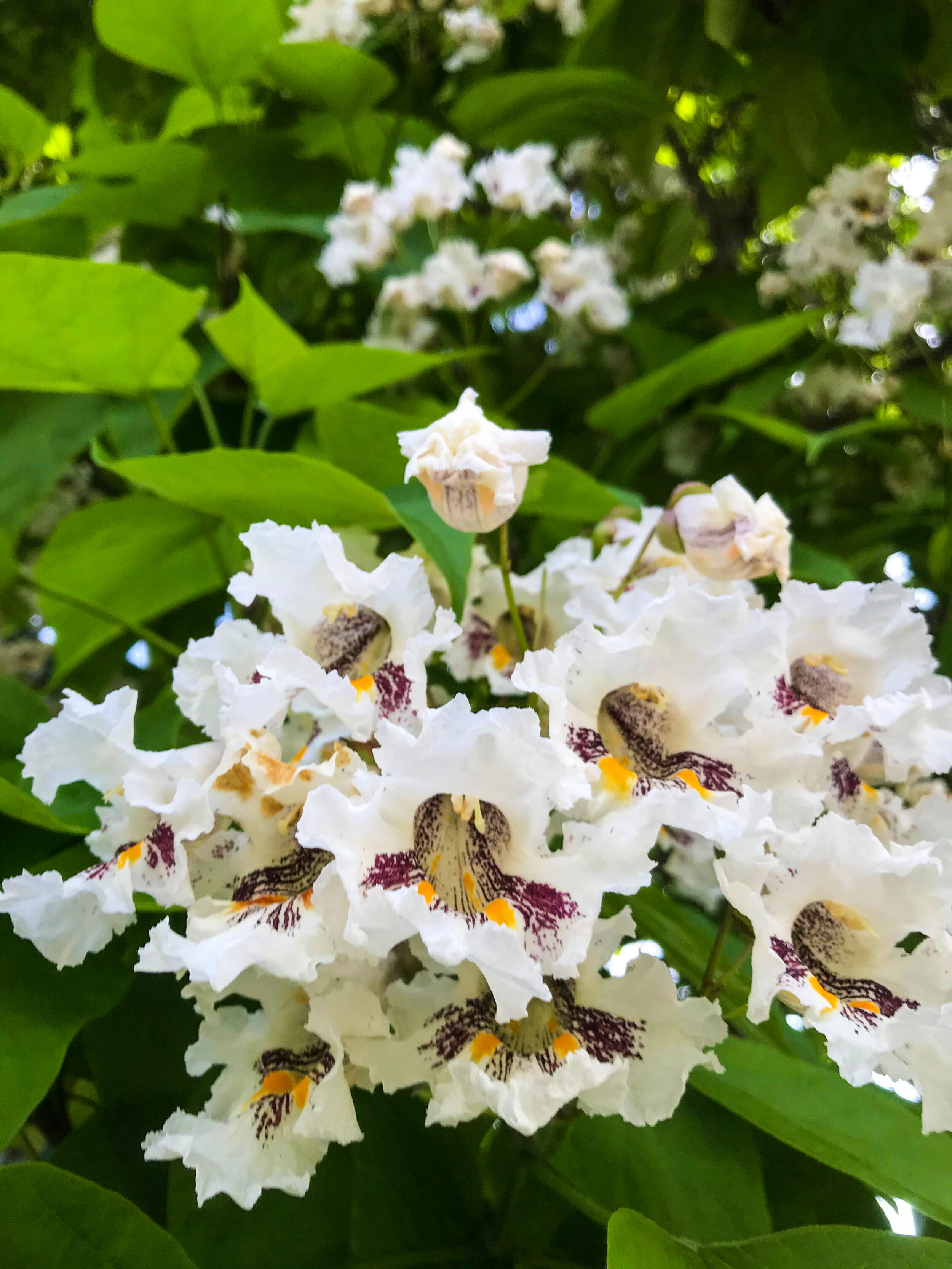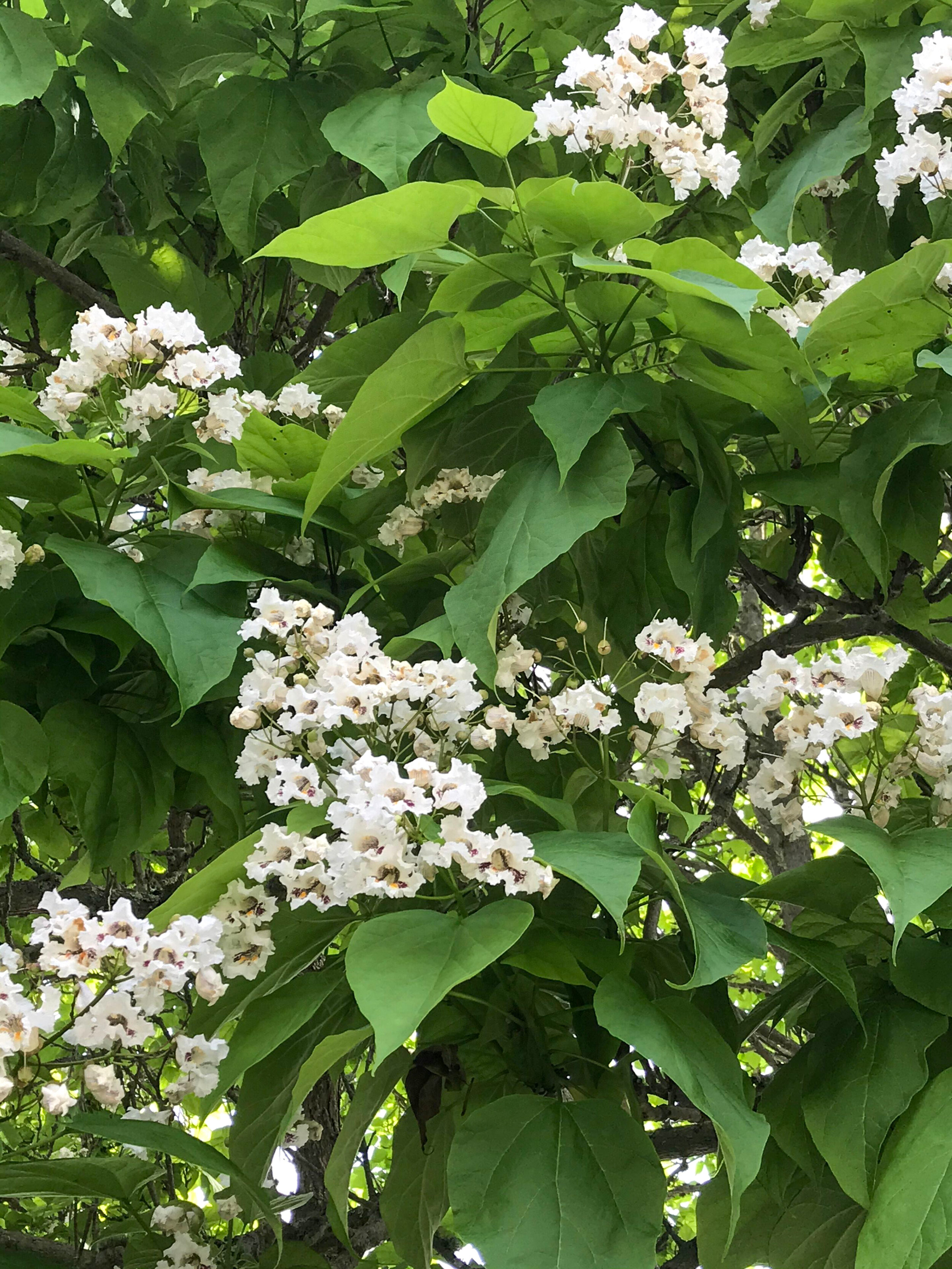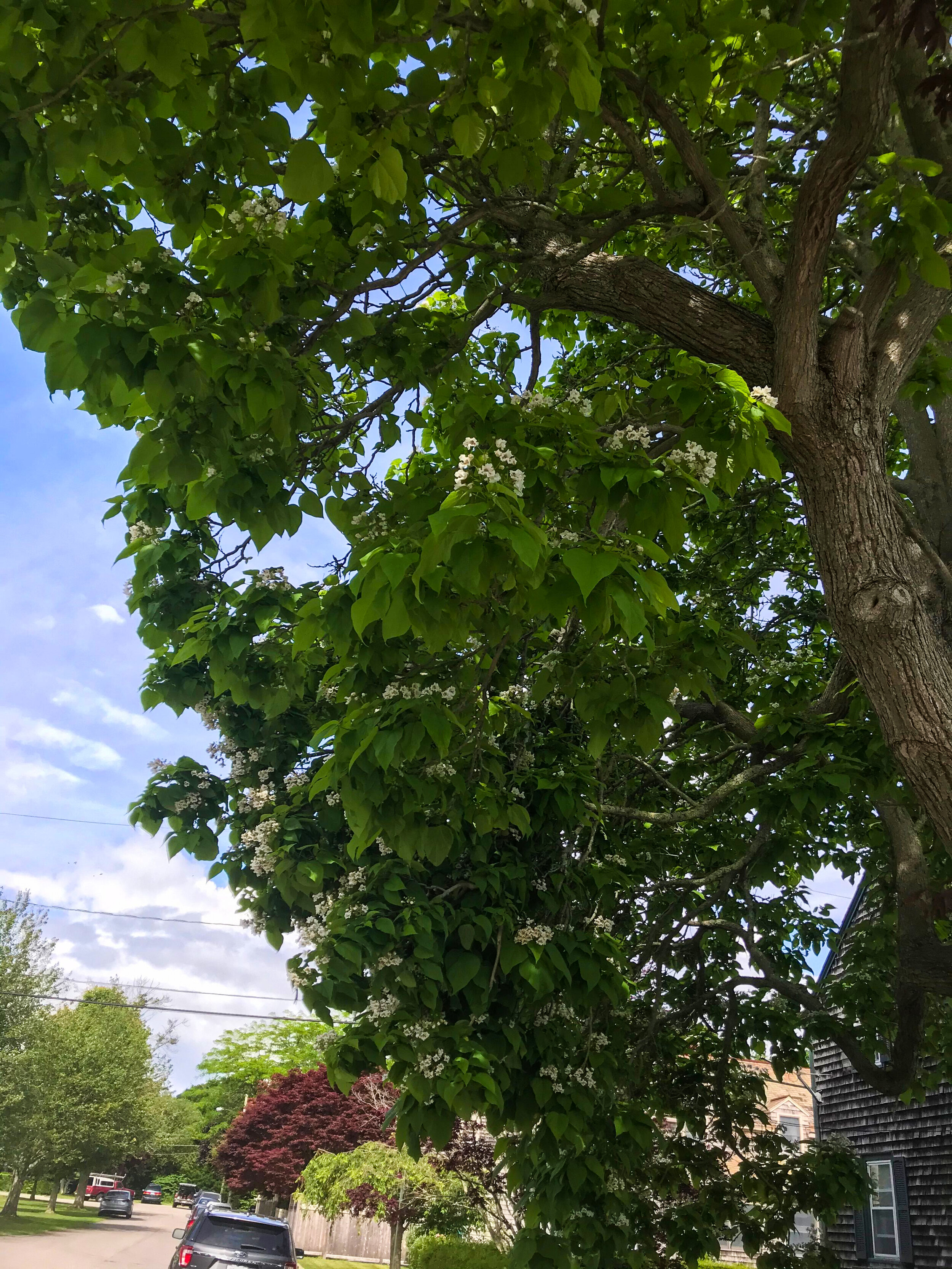Northern Catalpa
Catalpa speciosa
This week’s tree of the week is currently dropping its deep-throated white flowers, with yellow and purple splotches on Palmer street, just off the corner of Morgan street. A native of the Midwestern US, it has readily naturalized here in the East and is a great species for our local pollinators. Catalpa is visited by bees during the day and moths at night to pollinate its flowers. In the fall, these flowers turn into long, bean-like seed pods that lend the tree it’s other popular common name, the cigar tree.
Catalpa has a very tropical feel with its large, cordate leaves on whorled stems (heart shaped leaves with 3 leaves per node). Its large panicles of flowers can include over 20 per panicle and normally peak in this area around the Fourth of July. Many of its close relatives in the Bignoniaceae family are of tropical origin and like warm conditions.
Sometimes considered a weedy tree, as it readily seeds-in, catalpas are very tough trees and do well in disturbed sites, so you’ll often see them growing on woodland edges, or competing with invasive species. If given plenty of room in an open field, you will not beat its large spreading form with massive lower branches growing parallel to the ground, giving the trees a wider than tall appearance. Its wood is considered brittle, but it makes up for it by adding lots of caliper to its branches to support its bulky frame.




